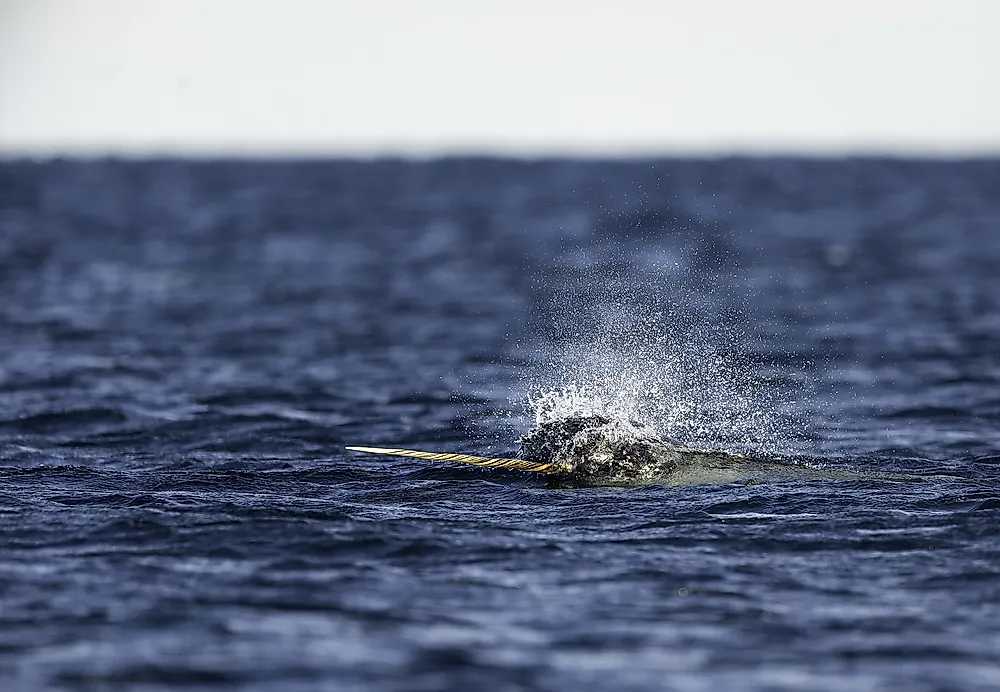Are Narwhals Real Animals?

Narwhals, Monodon monoceros, are toothed whales with a distinctive large tusk that protrudes from a canine tooth. Narwhals are real creatures of the Monodontidae family that inhabit the Arctic waters of Greenland, Canada, and Russia where they are spotted swimming in pods of twenty. There are about 170,000 narwhals in the world, which are classified as near threatened mostly thanks to human activities and global warming. If conservation efforts are not executed on a global level, the species face extinction.
Description
Narwhals, together with the dorsal fin lacking pure white beluga whale, are the only two living species of the Monodontidae family. The legendary "unicorn of the sea" is medium sized with an adult male weighing up to 3,530 lbs and females 1,750 lbs. Narwhals are identified by a distinctively long tusk mainly found in males. The tusk is actually a canine tooth projecting on the left upper jaw and through the lip to form a twirl helix. The tusk grows all through their lifespan up to 10 ft in length and weighs about 22 lbs. About one in 500 males have two tusks where the right canine also protrudes. Approximately, only 15% of the females grow a tusk that is long enough to form the spiral found in their male counterparts.
The hollow ivory tusk is an innervated sensory organ possessing up to 10 million nerve endings that connect the brain to seawater stimuli in the external environment. It is believed that the males communicate about the nature of the water by rubbing their tusks together. Some scientists believe that it is also a mating ritual intended to impress the females.
Diet
Narwhals have a restrictive specialized diet predominantly comprising of Arctic cod, cuttlefish, shrimp, Greenland halibut, and arm hook squid. To feed, they have to dive 1,640 ft. below sea level and use sound to detect their prey. Since the species does not have a well-developed mouth, they feed by swimming towards the prey until it is close enough to be sucked into the mouth.
Reproduction
Female narwhals reach sexual maturity at six years when they are ready to mate. The mating season occurs in April and May when they are in the offshore pack ice. The gestation period lasts for 14 months after which they give birth to a single calf, measuring 5 feet. Calves feed on their mother’s milk for 20 months during which they also learn and master survival tactics to use when they mature. At birth, calves have a thin layer of blubber, which is blue-gray in color and thickens from the fat content in the mother’s milk. As they age, their color changes to blue-black as juveniles, mottled gray in adulthood, and white when they age. In their natural habitat, they live up to 50 years.
Threats
Narwhals are some of the most threatened marine mammals. Major predators include polar bears, walruses, Greenland sharks, and killer whales, which kill a dozen of narwhals in a single attack. Humans harvest the animals for meat and the tusks, which are sold for carvings. At Hudson Bay, the narwhal market for both meat and tusks is valued at $530,000. Conservation efforts within the European Union implemented strict bans the imports of tusks and quotas on catches. Only the indigenous Inuit people of the Arctic are allowed to hunt narwhals for subsistence.











